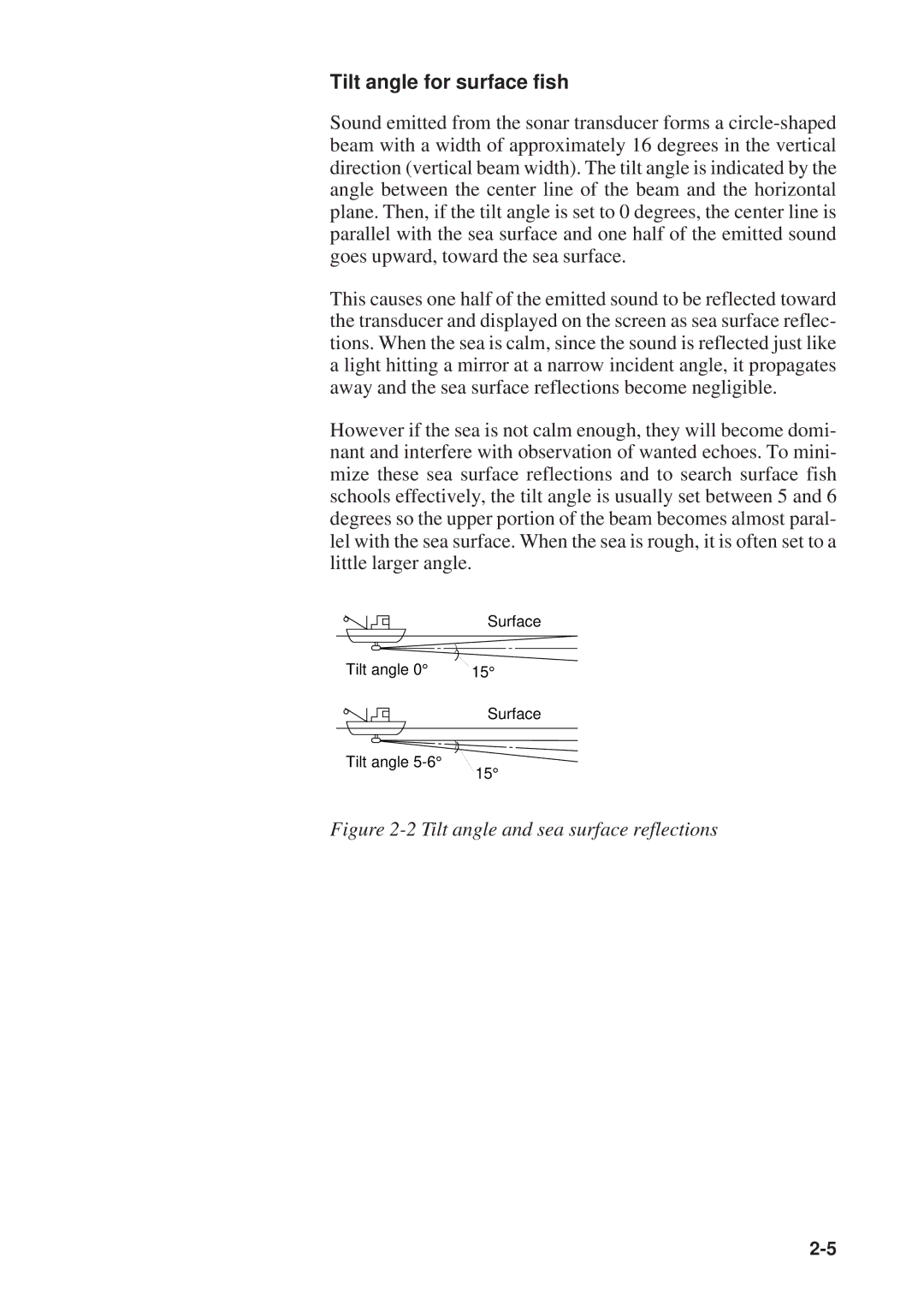
Tilt angle for surface fish
Sound emitted from the sonar transducer forms a
This causes one half of the emitted sound to be reflected toward the transducer and displayed on the screen as sea surface reflec- tions. When the sea is calm, since the sound is reflected just like a light hitting a mirror at a narrow incident angle, it propagates away and the sea surface reflections become negligible.
However if the sea is not calm enough, they will become domi- nant and interfere with observation of wanted echoes. To mini- mize these sea surface reflections and to search surface fish schools effectively, the tilt angle is usually set between 5 and 6 degrees so the upper portion of the beam becomes almost paral- lel with the sea surface. When the sea is rough, it is often set to a little larger angle.
| Surface |
Tilt angle 0° | 15° |
| Surface |
Tilt angle
15°
